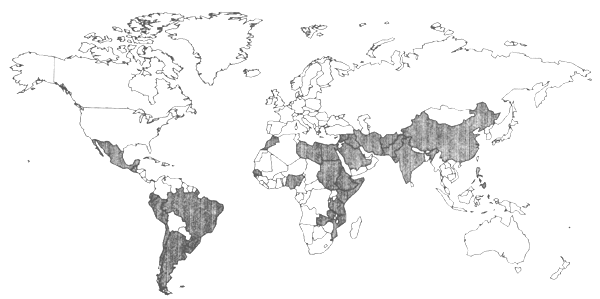Echinococcus granulosus
What is the commonest parasitic cyst which
affects the liver?
To have an insight to this harmful tissue
cestode infecting humans.
Hydatid
disease is the human infection with the hydatid cyst, the larval stage of Echinococcus
granulosus.
Cosmopolitan
especially in sheep raising countries.

Adults
live in the small intestine of dogs and canines (the definitive host) but
not man.
-
Eggs are discharged in the faeces of dogs and
are ingested by sheep, cattle, camels and occasionally man (the intermediate hosts).
-
In the intestine of intermediate hosts, onchosphere
hatches, penetrates the mucosa, passes by lymphatics or venules to blood stream
to be distributed to various parts of the body where it undergoes vesiculation
and develops slowly into large fluid cyst called Hydatid cyst.
-
Dogs and
canines are infected by eating viscera of intermediate hosts, where the
scolices develop into adults.
Hydatid
cyst is the diagnostic stages.
Eggs passing in stool of infecting dogs are the infective stage.
Click here to see the life cycle.
Man is infected by ingestion of eggs through:
- Hand to mouth from fur of infected dogs while playing with them.
- Food or drink contaminated with faeces of infected dogs.
State true or false:
Infection with hydatid disease occurs as a
result of ingestion of infected sheep's liver.
True False
Let us discover what this parasite will do in
your body.